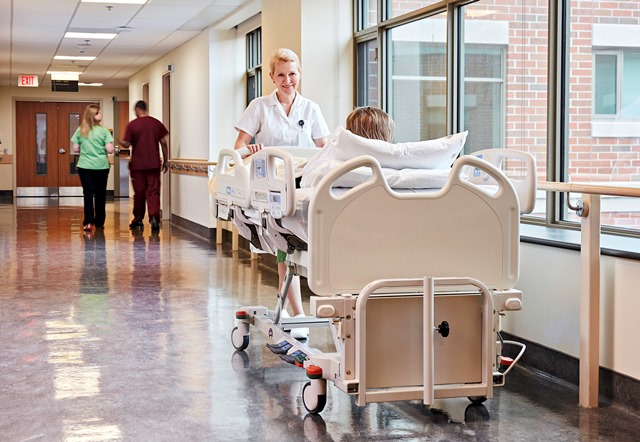
By Michael Oreskovich
Twenty per cent of seniors who break a hip die within a year due to post-operative complications, according to a 2010 report from the Public Health Agency of Canada. Runnymede Healthcare Centre addresses this serious health risk to Ontario’s seniors by providing a safe bridge to home through the Low Tolerance Long Duration Rehabilitation (LTLD Rehab) program. For 75-year-old Luisa Soares, the specialized level of care Runnymede provides wasn’t just essential to her recovery – it was life-saving.
Last summer, Soares fell in the garden of her Mississauga home, breaking her hip and fracturing her wrist. The independence that the 75-year-old had enjoyed her entire life was suddenly thrown into uncertainty. After her fractures were surgically treated in an acute care hospital, Soares was admitted to Runnymede’s LTLD Rehab program.
Soares was far from alone in her healthcare needs; the Public Health Agency report states that about 40 per cent of all fall-related hospitalizations among seniors involve hip fractures. In addition to causing a decline in overall quality of life and potentially reducing life expectancy, these injuries also increase the likelihood of long-term hospitalization.
Since 2012, the LTLD Rehab program at Runnymede has helped over 1,500 patients transition back to the community after injury or surgery in acute care by providing low-intensity rehabilitation. In the fall of 2016, Runnymede strengthened its focus on rehabilitation by attaining an official designation as a rehabilitation hospital, enabling it to build on its strengths and expertise and expand the level of its services.
Patients in the LTLD Rehab program receive continuous medical supervision, which helps minimize the impact of complications that could arise during their recovery. This level of care proved to be vital to Soares while at Runnymede, even though it wasn’t immediately apparent. “When she was first admitted, Luisa seemed like the ideal rehab patient,” said Elisabeth Despres, Runnymede’s professional practice leader – allied health and pharmacy. “Although she couldn’t stand or walk due to her injury, our team was confident that we would meet her goal of returning home within a few weeks.”
After making strong gains early in her recovery, Soares reported feeling dizzy and drowsy. “We were alarmed because we thought it could be a symptom of a bigger problem,” said Van Nguyen, physician assistant at Runnymede. The interprofessional team responded immediately by collaborating with an acute care partner to diagnose Soares’ condition. A CT scan confirmed the presence of blood clots in the major blood vessel in her lungs. “The formation of these clots in the lungs is a common post-operative complication, which is potentially life-threatening because they block blood flow to the lung,” says Nguyen. After one week of treatment in acute care, the severity of Soares’ symptoms subsided and she was readmitted to Runnymede.
Upon her readmission, Soares was like an entirely new patient. “Her condition was very serious so we monitored her carefully and helped her stabilize,” said Nguyen. “Our focus was on getting Luisa well enough to resume her rehab.” The physiotherapy and occupational therapy teams’ focus also needed to shift in order to meet Soares’ new challenges; their treatment plans were revised according to her needs. “Luisa couldn’t tolerate the same level of rehab as before, so we worked with her to set new goals,” said Despres. “We had to go back a few steps and work on simpler things, like getting out of bed.”
The road to recovery isn’t always a smooth one. For patients recovering from injury or surgery – seniors in particular – life-threatening complications can arise over the course of their rehabilitation. Runnymede’s LTLD Rehab program addresses this risk by providing patients with around-the-clock medical supervision that exceeds what is available either at home or in a community care setting.
For Soares, the extended rehabilitation and continuous medical supervision paid off. Three months after her injury, she was back at home and had resumed her independence. Prior to her discharge, the physiotherapy team made arrangements with a healthcare facility near Soares’ home to ensure she would get the necessary follow-up treatment in her community – as a matter of fact, she even drives herself to get there.
Michael Oreskovich is a Communications Specialist at Runnymede Healthcare Centre.

